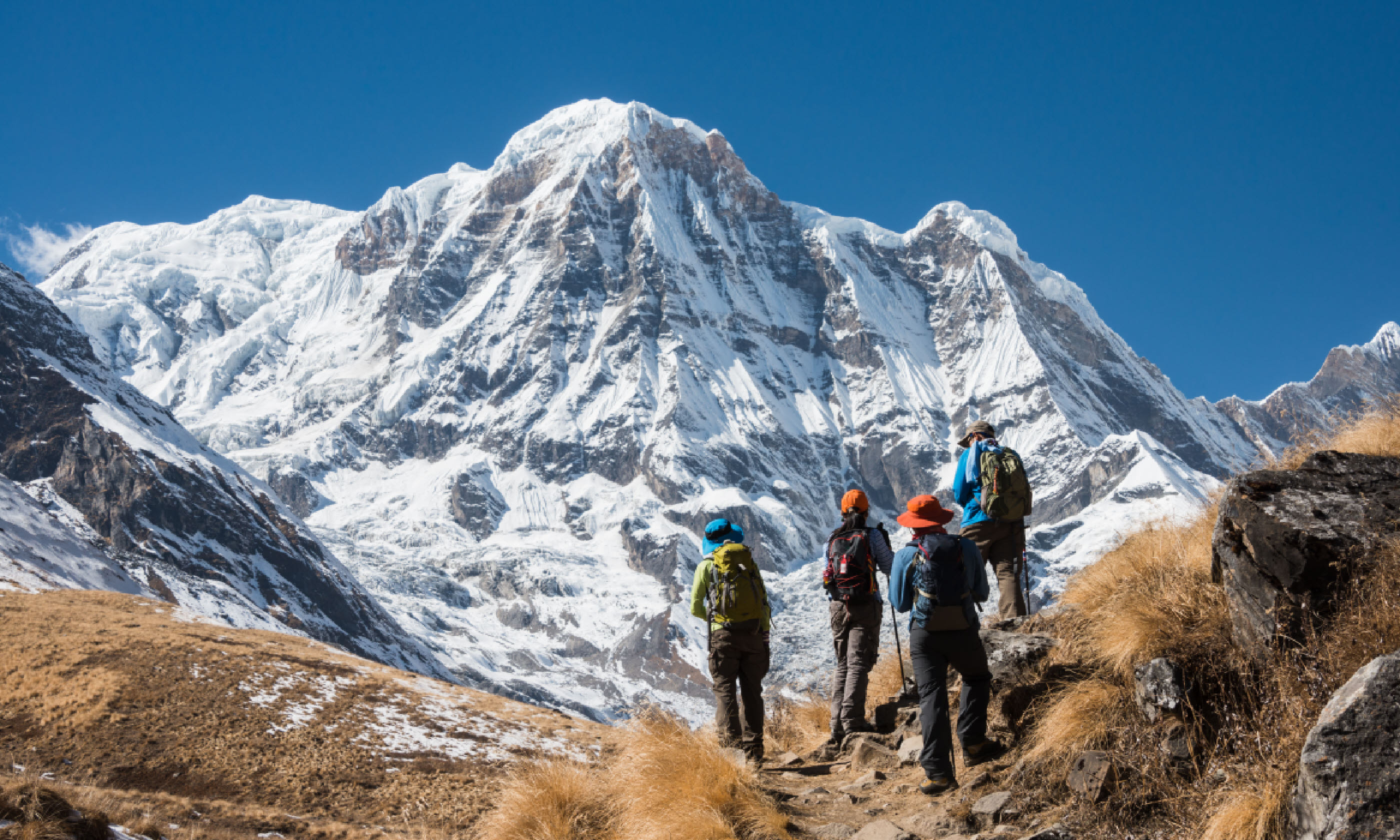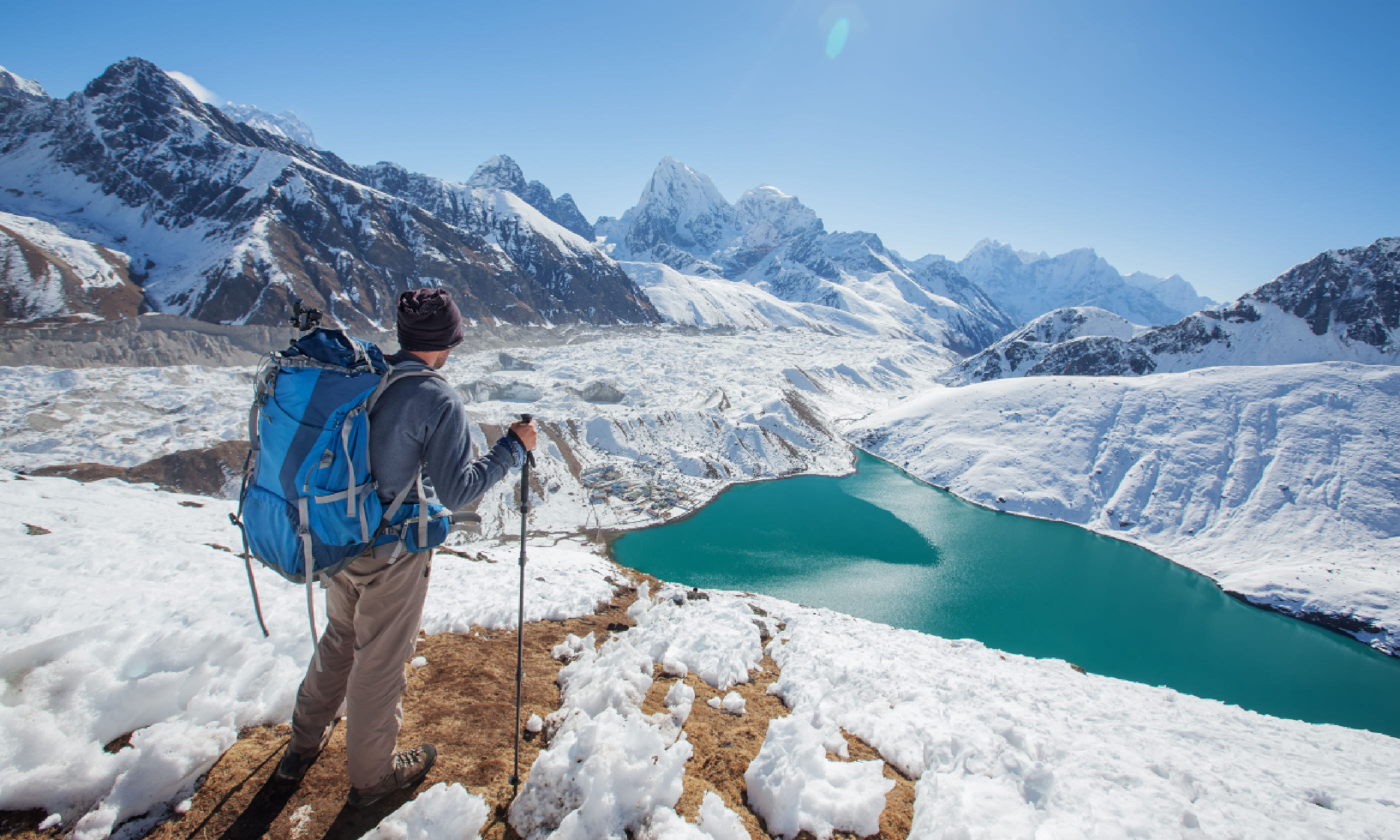
Nepal is one of the best trekking destinations in the world – and it's fully open for business after the 2015 earthquakes. So what do you need to know before you go?
Knowledge is power, especially when it comes to travel. And the best way to fully enjoy your trip is to be prepared. Nepal is a developing country, so poor hygiene and illness is prevalent throughout. Visit your GP several months before you leave. They are full of advice and have the most up-to-date vaccine information.
Some of the most common problems are food- and water-borne gastrointestinal illness. If you are feeling under the weather, it is still important to stay nourished and hydrated. Bring along some of your favourite trekking snacks in case you crave a taste of home.
The Himalaya are a beautiful range of mountains, but it's important not to get too starry-eyed about your surroundings and to remember proper high-altitude safety. Researching the effects of high altitude and the dangers it can present prior to arriving in Nepal will help solidify the knowledge before you are overwhelmed with the excitement and culture shock of your trip to Nepal.
Everyone, at some point or other in their high-altitude adventures, will have trouble acclimatising to the thinner air. There is no way to predict how your body will react, but, again knowledge is power. The only way to truly acclimatise well is by taking your time; do not rush the ascent or push your body if it is telling you to rest.
Nepali people are extremely kind, giving and calm, and their attitude towards the pace of everyday life is slow. This makes for an enjoyable interaction with a charming people, but you'll need to be patient if things do not run as smoothly as expected.
On Nepali time, pushing harder will probably not get things accomplished as quickly as it would at home.

Hiker in the Himalayas (Shutterstock)
Nepal is filled with followers of many different religions, the main two being Buddhism and Hinduism. These beautiful belief systems are filled with colourful symbolism that is prevalent throughout the country.
While you will learn much about the religious culture during your visit, an introduction would serve you well before arriving. That way, when you are admiring the fantastic architecture and statues, bright blue deities, and monolithic reliefs on large boulders, your basic understanding of deities and tenets of Hinduism and Himalayan Buddhism will give you a deeper understanding.
You will get a lot of use out of a face mask or a Buff! Kathmandu is a very interesting city, but it is overpopulated and extremely polluted. The smog is so thick that locals often wear face masks to work (they even have nice synthetic fashionable ones!) If you start to develop a tickle in your throat while in the city, it may not be a cold – just the thick, dirty air.
In the mountains, the air is crystal clear but very thin and dry. Again, your Buff or face mask will continue to be your friend as it protects your lungs from this harsh dry air and the dreaded "Khumbu Cough." The Khumbu Cough, or the high-altitude hack, will make trekking – and breathing – more difficult. Avoiding over-exertion and wearing a mask to keep moisture in the air going into your lungs will help prevent this.
Want to get the full lowdown on trekking in Nepal? Don't miss the Dec/Jan issue of Wanderlust – it includes a 12-page feature on Nepal to help you plan your trip!